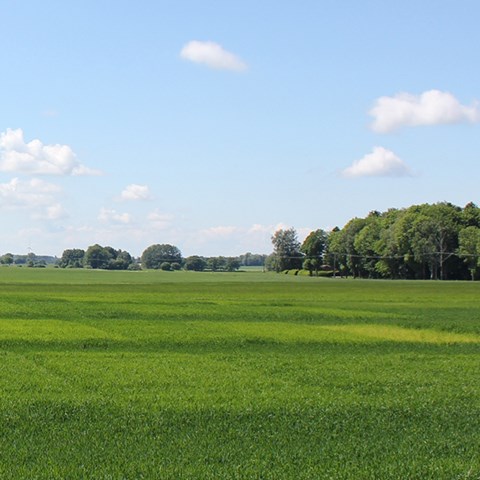Contact
gunnar.borjesson@slu.se, 018-672753

A typical field experiment with e.g. fertilisation strategies consists of a number of treatments, usually measuring yield and quality. The treatments are applied in carefully pre-measured experiment plots according to statistical principles.
The plots are normally around 50 square metres and rectangular, but the size varies depending on the subject of the investigation. Annual results are processed statistically in variance analysis models adapted to the experimental design. They are quality controlled and presented in experiment reports which are collected in a database at Fältforsk. The results for experiments in recent years are also collected here. In addition, all primary data are saved in the experiment database. These data are not generally available, but are released on There are also two comprehensive archives of soil samples and plant samples. All these samples have been taken in plant nutrition experiments and are stored in dried and milled form. Sub-samples for follow-up or new analyses can be obtained.
Humus balance - cereal: Comparing cropping systems where all straw is removed with systems where all straw is returned at four different nitrogen levels.
Humus balance – ley Comparing cropping systems with rather monotonous ley cropping at different nitrogen levels.
AC-13-1980 C-54-1970 R-620-1981M-353-1980 AC-14-1980 C-55-1970 R-621-1981 M-354-1980
Five different crop rotations where different cropping systems are compared. The comparisons are based partly on cropping specialisation (animal enterprises compared with no animals) and partly on plant nutrient supply, intensive in relation to extensive cropping. In certain systems, the nitrogen supply is based on biological N fixation.
Lanna 1978 R-516-1978
Both these experiments are at Lanna. The experiment series, which includes the two oldest field experiments in the country, shows how the effects of liming and phosphorus fertilisation affect each other. One-off doses of lime were applied at the start. In the middle of the 1970s, half the experiments were re-limed. There are therefore plots without lime and with lime at the start and none thereafter.
Lanna 1936 R29-1936
Lanna 1941 R27-1941
Liming at three levels: unlimed, and liming to 70% and 100% of base saturation. This is combined with variants where all harvest residues are removed or returned to the area. All variants are finally compared at three different NPK levels, low, moderate and high.
Röbäcksdalen 1962 AC-2-1962
Comparison of crop rotations with and without animal rearing: 1. Cropping system with animals, manure supplied and ley included in the rotation. 2. Cropping system without animals. In contrast to crop rotation 1, no manure is supplied and ley is not included in the rotation. All other factors are similar: Varying N and PK levels, including replacement of nutrients removed.
Kungsängen 1963 C-7-1963
Fors 1963 C-8-1963
Klostergården 1966 E-9-1966
Högåsa 1966 E-10-1966
Fjärdingslöv 1957 M-1-1957
Orup 1957 M-2-1957
Borgeby (f.d. Örja 2010 M-4-2010
Edebo 1957 M-6-1957
Bjertorp 1966 R-94-1966
Nitrogen intensity - varying P and K
Offer 1969 Y-7-1969
Röbäcksdalen 1969 AC-410-1969
Aims to monitor changes in soil structure after addition of plant nutrients and organic material. At Lanna the organic material applied is grass hay, farmyard manure, sewage sludge and composted waste.
Lanna 1996 R-306-1996
Ultuna 1956 Ram-1956
gunnar.borjesson@slu.se, 018-672753